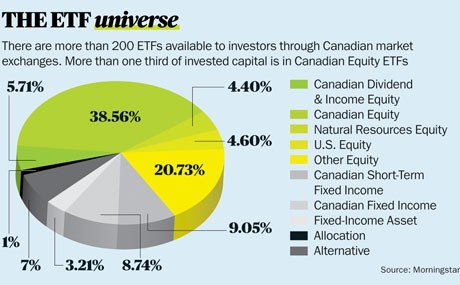Government Bond ETFs Pros and Cons Growth Financial
Post on: 17 Апрель, 2015 No Comment

For keeping a portfolio stable in the face of the stock markets volatility. treasuries and government bonds are a popular strategy. One method for getting into them is exchange-traded funds (ETFs). They have their own risks and rewards, though, and it is important to keep in mind what they can and cannot do.
Pros
The pros are safety and income generation. Most people think of U.S. Treasury bonds and imagine the ones that grandma had in a safety deposit box or drawer. Government bond ETFs are much the same, except that they are more easily tradable.
In fact, that convenience is one reason such ETFs have become popular, said David Mazza, head of research for SPDR ETFs at State Street Global Advisors. He noted that the cost of trading bonds generally has risen. When it comes time to trade bonds, the spreads [investors] pay are some of the widest levels in recent history, he said. Its become a lot easier and cheaper to just trade ETFs in an online brokerage account. (For more, see: Bond ETFs: A Viable Alternative ).
Cons
The cons are the interest rate risk. One thing that has changed in the last few decades is that bond rates on treasuries are at historic lows. The federal funds rate is at 0.25%. Even 30-year bonds, which usually carry the highest rates, hover at less than 3%. In the mid-1980s the 10-year bond was north of 14%, a reaction to double digit inflation a decade earlier.
This means there is nowhere for rates to go but up. That presents some risk to short-term investors, the people who are essentially using the bonds as a cash reserve, said Tom Boccellari, an analyst of passive strategies at Morningstar, Inc. (MORN ).
For longer-term investors that risk is less acute, because at that point odds are youre buying bonds with longer maturities, whose rates tend to be more stable. The reason is that one is betting that the U.S. government will pay debts over longer periods. While theres a higher interest rate associated with that, the record for 20- and 30-year bonds has been good enough that its unlikely investors will demand much more, unless one was expecting hyperinflation. Boccellari said.
Hyperinflation is not something the U.S. has ever had — inflation rates peaked in the 1970s and 1980s and have been below 5% for a generation. High inflation tends to make the Federal Reserve Bank tighten the money supply and it also means investors demand more return since inflation eats into the value of interest-bearing investments. (For more, see: The Importance of U.S. Treasury Rates ).
As for returns, those can still be good. The following table shows the largest government bond ETFs in terms of assets:














